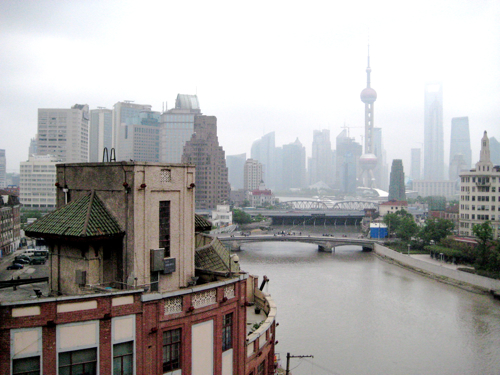I love email, but I regret not receiving as many letters (stamped, in an envelope) anymore. Of course, I don’t send them all that often, either, but the hand-written note is precious. Sometimes I have this fantasy of buying an old-fashioned type-writer and hammering out long rambling letters—thoughtful poetic letters—like the kind you read in history books, such as this from Abigail Adams to John Adams:
…should I draw you the picture of my Heart, it would be what I hope you still would Love; tho it contained nothing new; the early possession you obtained there; and the absolute power you have ever maintained over it; leaves not the smallest space unoccupied. I look back to the early days of our acquaintance; and Friendship, as to the days of Love and Innocence; and with an indescribable pleasure I have seen near a score of years roll over our Heads, with an affection heightened and improved by time—nor have the dreary years of absence in the smallest degree effaced from my mind the Image of the dear untitled man to whom I gave my Heart…
Lovely.
But as much as I love letters, I marvel at how they are delivered. I adore the post office. I love the smell and look of it, I think stamps are wonderful things, and I am amazed at how for a small (but increasing) fee, you can drop a letter into a box in New York City, and have it arrive days later in Seattle, at your home—in one piece, unread by strangers. That is remarkable. And think—before email, before telephones—this was one of the only ways to contact someone: through the post.
Now, the postal service (in one form or another) has been around for thousands of years. Egypt had a system as early as 2000 BC, as did the Persian and Roman Empires. China, too, had a postal delivery system starting in the Chou Dynasty, around 1100 BC. All of these started out as little more than a messenger service used to convey official documents—but any technology or service that the government and military develops usually trickles down into public service, and I don’t think the mail was any different—then or now. Suffice to say, the history of sending letters over great distances is a varied and fascinating one, and I love it (as if I haven’t made that clear enough).
So, it was with great pleasure that I visited the Shanghai Postal Museum (located at 250 North Suzhou Road, Hongkou, in case you decide to stop by). What a fascinating place. I wasn’t supposed to take pictures of the exhibits, but I snapped a few anyway. Following rules? Whatever. Anyway, the museum paints a picture of the postal service in China, dating back for several thousand years (the first letters were scratched out on tortoise shells). Below are some pictures (painting and statue) of mounted messengers who carried official documents. You can click them to enlarge.


It wasn’t until the Qing Dynasty that a real (as in, more modern) postal service was established, and the picture below is of a mailbox with the words “Chinese Imperial Post” written on it. There’s also a dragon. I want my letters sent that way, man. Also, check out the postal horse and wagon—and the post office train, which was a delight to be inside. Honestly, I could live on that thing (with its charming desk and shelves for sorting the mail) and be happy forever.


The museum was a maze of delights, including this atrium—but there was also a whimsical and charming rooftop garden, which was utterly unexpected (one of the security guards told us about it), and had breathtaking views (along with some adorable kids who had obviously been to McDonalds and were tickled to death about it).






